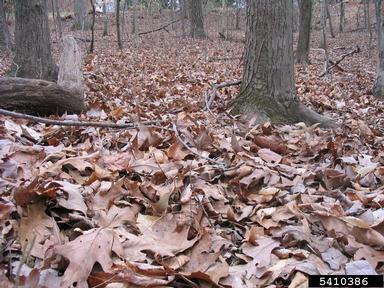This morning I had the dubious privilege of reading Apocaplypse Not: Here’s Why You Shouldn’t Worry About End Times, by Matt Ridley, on wired.com.
For the record, I’m not pro-apocalypse. I think that having an apocalypse is probably a bad idea for everyone. Whether by human immorality or an act of an angry God, an apocalypse would likely suck. A lot.
Hilariously, my opinion doesn’t make any apocalypse or apocalypse-related-event more or less likely. Neither does Matt Ridley’s, or Wired magazine’s.
Ridley’s rebuttal of dooms-day-proponents is riddled with ridiculous assumptions that can only be described as his (stupid) opinion. While it’s true that the world hasn’t ended, lots of appalling things have happened. Denying their gravity is to deny the basic humanity that is worth fighting for, and that could be lost if ‘the world’ (ie civilization as we know it) were to end. His privilege as a rich white human male is so prominent in this article that the article may as well be titled:
“I don’t have to worry about anything because, failing the worst kind of disaster, literally billions of people would die before I would be in danger! Now I am going to eat a cake!”
In his introduction alone, Ridley says that the spectre of global famine is/was exaggerated… twice. I’m sure that the tens of thousands who starve to death every single day would certainly agree with him.
First World famine hasn’t happened. Just because it hasn’t happened to us doesn’t mean that it isn’t important. It deserves more attention than as just “an obstacle,” as Ridley calls it.
Next, Ridley tells us that the fear-mongers used to talk about acid rain. Can you believe it? I mean, nothing bad happened from acid rain! We still have forests and stuff!
Except that many fish died. Lakes lost their lives. It wasn’t ‘global’, it may not have been ‘catastrophic’. But it is important, nonetheless. Just because it wasn’t so big and bad that we could never come back from it, doesn’t mean that it can be dismissed just like that.
Ridley explains that we don’t have to worry about environmental destruction because AIDS isn’t a big deal. Really. You see, anecdotally, there have been environmentalists throughout the last four decades saying that shit is going to hit the fan and it ain’t going to be pretty. Well, reasons Ridley, nothing entirely catastrophic has happened YET. And people said equally terrifying things about AIDS, but AIDS hasn’t changed MY life. Therefore, they are just asking us to be scared because it entertains them.
He acknowledges in five words that, yes, AIDS did become epidemic in Africa. But he is a white British guy, so an epidemic in Africa doesn’t really matter, right?
Funny how something can certainly feel like an apocalypse to those who can’t escape it, but can be dismissed in five words by those whose privilege helps them believe they are above it.
The next part of the article – discussing the growth of human population and how we are going to feed all these people – is definitely my favorite. Did you know, for example, that smaller families are caused by lower infant-mortality rates? Yeah! They’re not caused by, I don’t know, better education for girls and women.
Oh wait, I’m lying. Smaller families are caused by better education for girls and women. Empowerment, equality, that old hat sort of stuff. But a man who is trying to prove thatcivilization will prevail and that science will overcome just as long as we continue to do things the way we always have… well, he’s going to say that science (lower infant mortality rates) are what is slowing world population growth. Not some froo-froo hippy feminist equality stuff.
“Over the past 50 years, worldwide food production per capita has risen, even as the global population has doubled”
Let me tell you a story, Matt. Once upon a time there was a whole bunch of extra nitrogen that was no longer needed for bombs because the war ended. So people decided to start using it as fertilizer. Bam! That’s the sound of explosive crop growth. It was called the Green Revolution, and has culminated, like you said, in growing crop productivity.
For a while.
It’s also culminated in a shit-ton of run-off nitrogen in the ocean, causing algae flushes that choke out all other marine life. It’s culminated in a thriving pesticide-and-herbicide industrial agriculture new-world-order, because Nitrogen helps weeds grow, not just corn or wheat, so we have to kill the weeds. It’s culminated in the growth of super weeds, which are pesticide resistant, and are taking over your precious mono-crop, savior-of-humanity wheat fields. It’s culminated in those same pesticides contaminating most of our groundwater and surface water, wreaking havoc of varying degrees on individuals of many species, humans most definitely included.
“With improvements in seeds, fertilizers, pesticides, transport, and irrigation still spreading across Africa, the world may well feed 9 billion inhabitants in 2050—and from fewer acres than it now uses to feed 7 billion.”
The ‘improvements’ you speak of have stopped increasing productivity. In fact, that same productivity is now on the decline. No matter how much nitrogen you pump into exhausted, sterilized top-soil, its fertility is drained by being constantly ripped apart by machines, soaked in poisons, and ravaged by annual grains. Soil in that condition fosters the growth of superweeds (many of whom are natural soil-improvers), and crop diseases. It also loses it’s ability to hold water, meaning it needs near-constant irrigation. Irrigating land that is naturally too dry to nurture thirsty crops like corn or rice (or soil that’s been exhausted) is a short term solution. It causes salination of the soil, and fast. Armies used to salt their enemy’s fields to inflict famine on them. Now, we’re doing it to ourselves. And calling it progress.
Last, but certainly not least, Mr. Ridley tells us not to worry our pretty little heads about peak oil or peak anything, for that matter. You see, there’s lots of oil that we can access, any old time we want! It’s just going to be a bit harder to get to, that’s all. Civilization will prevail and science will overcome, remember?
What he doesn’t mention is the cost in lives and livelihoods to access this oil. Frakking devastates massive swathes of living land. There is no safe way to dispose of the waste water. And have we already forgotten the gargantuan dead-zone in the gulf of mexico, or the freaky, mutant shrimp that are being discovered all along that coast?
In his conclusion, Ridley tries to tell us that some climate change might even be a good thing. “…net increases in rainfall (and carbon dioxide concentration) may improve agricultural productivity,” he says. In the midst of one of the worst droughts North America has seen since colonization began, which will likely see the corn and wheat crops fail, which has already caused global prices for those crops to skyrocket.
“We will combat our ecological threats in the future by innovating to meet them as they arise, not through the mass fear stoked by worst-case scenarios.”
Or, we will continue to prosper from our privilege, whether the poor and the dying like it or not, and at any cost. The deaths of humans and animals and plants out of sight do not bother me, and they shouldn’t bother you either.
Thanks, Matt.








































